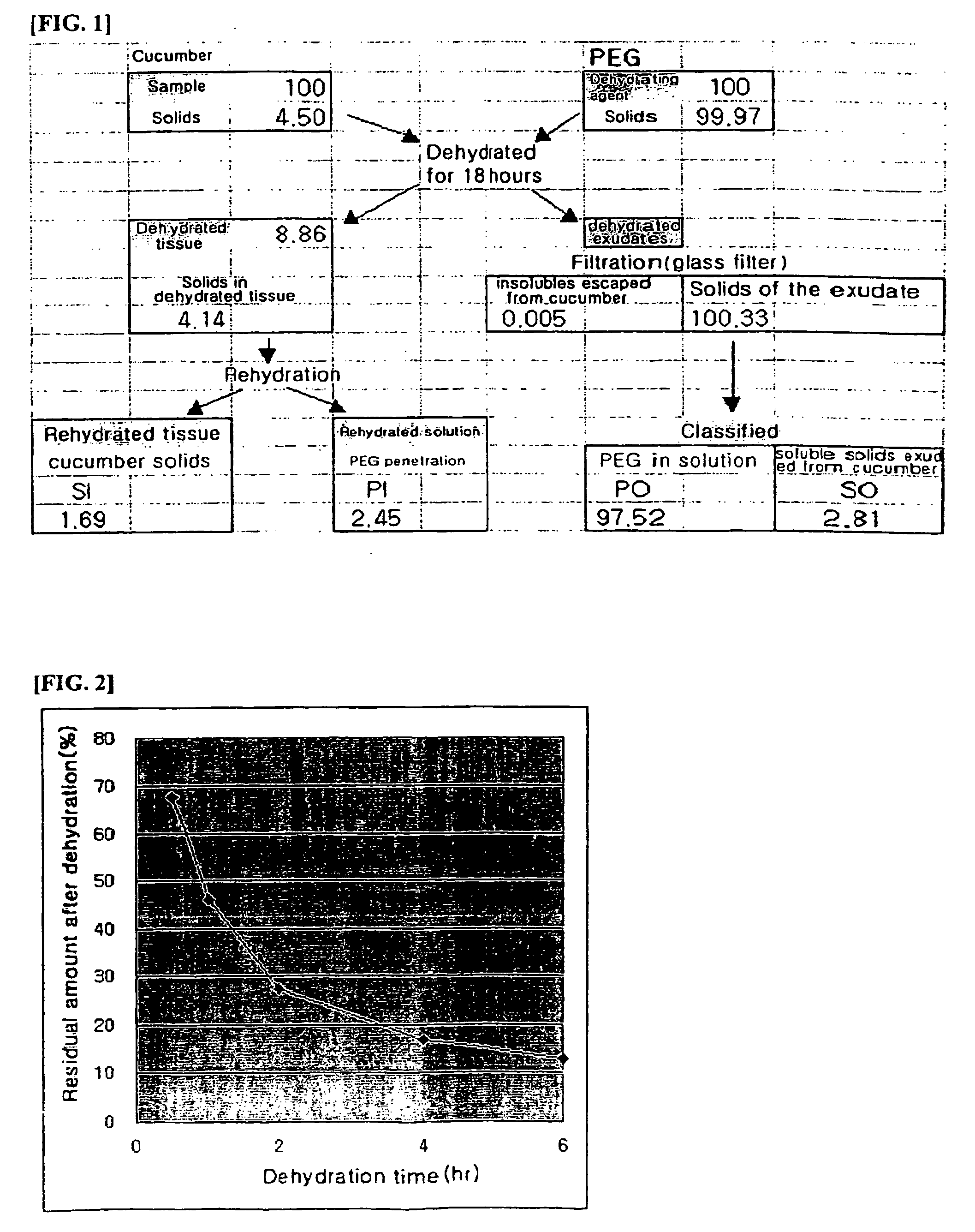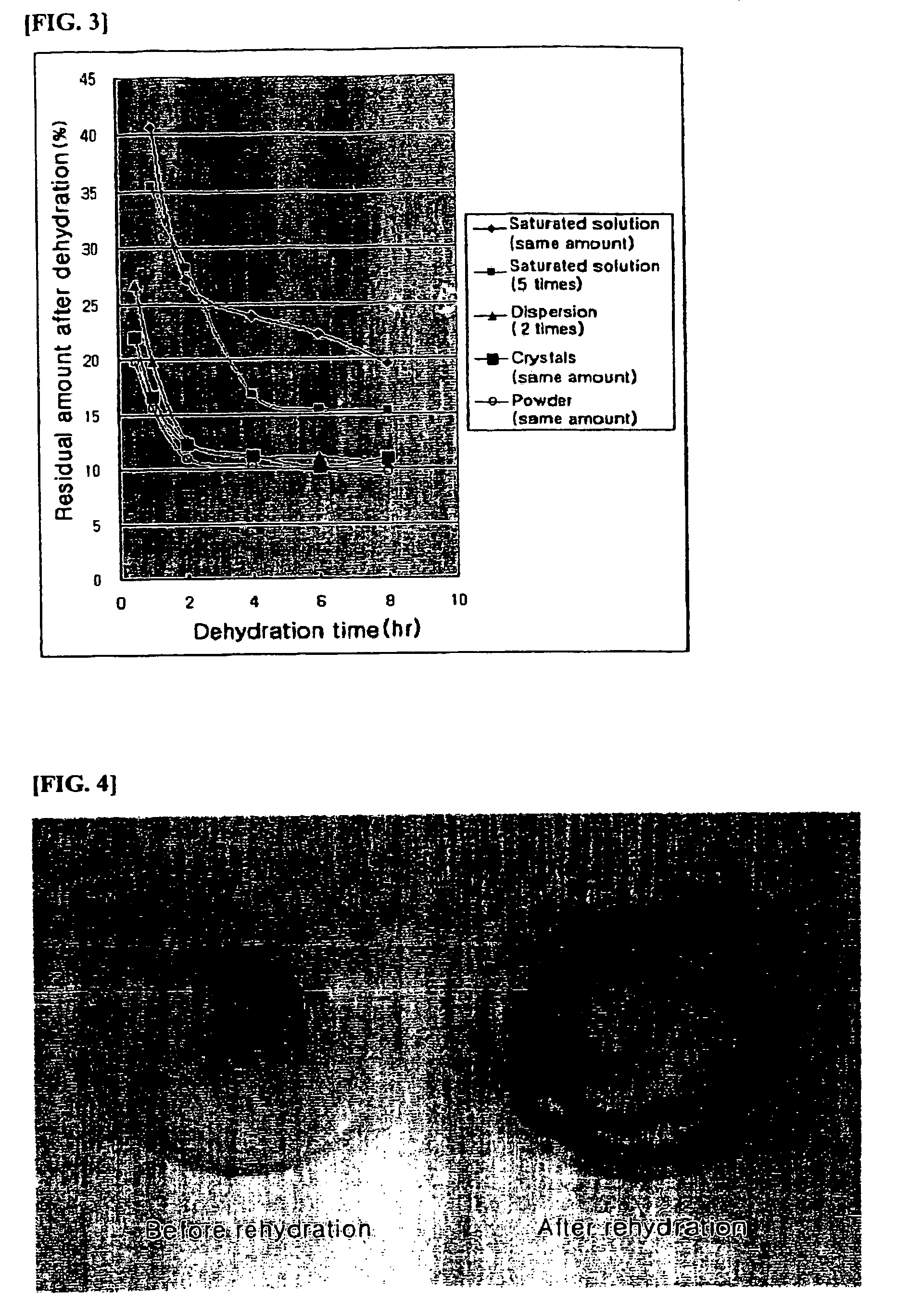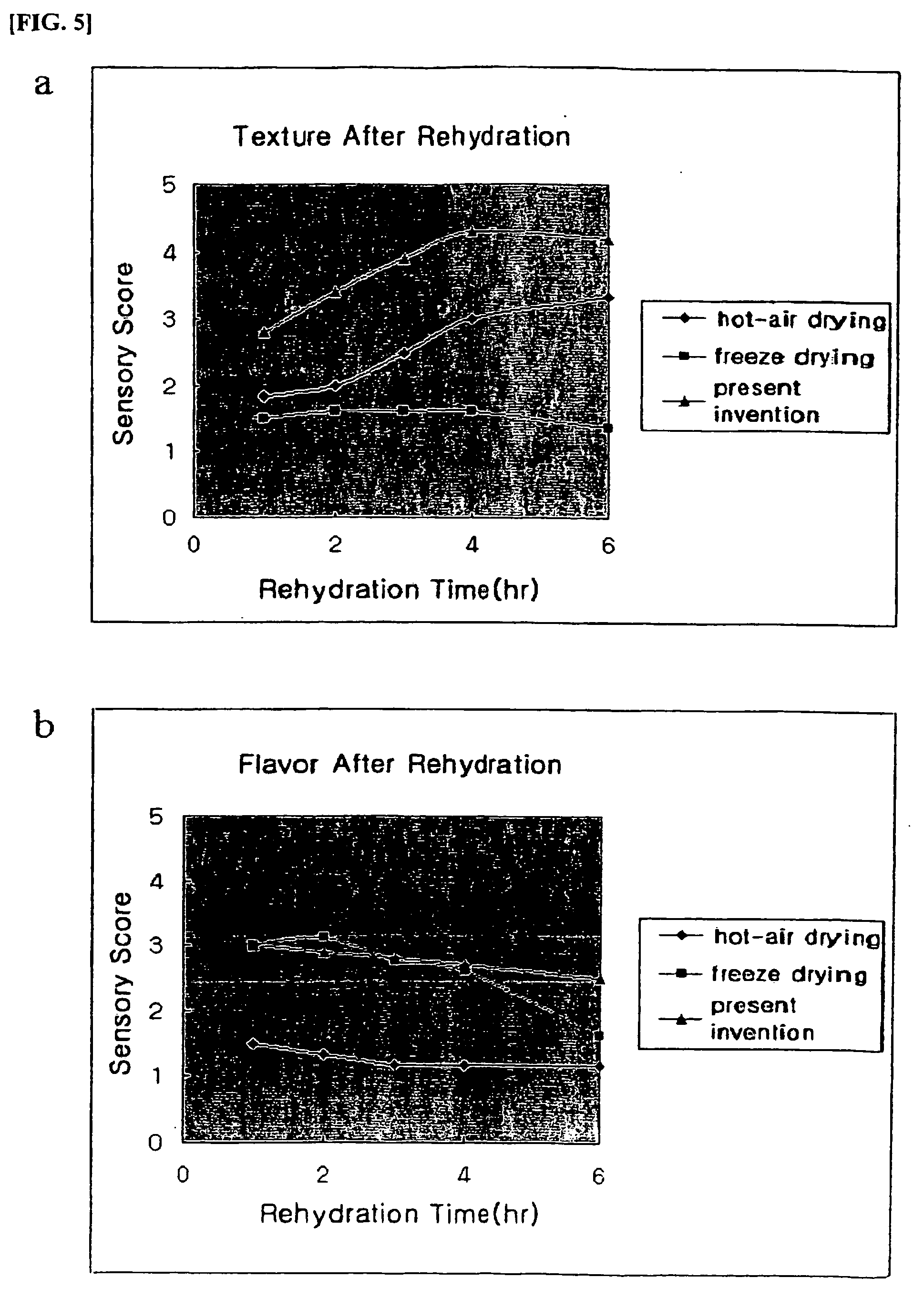Molecular press dehydration method for vegetative tissue using the solid phase of water soluble polymer substances as a dehydrating agent
- Summary
- Abstract
- Description
- Claims
- Application Information
AI Technical Summary
Benefits of technology
Problems solved by technology
Method used
Image
Examples
Embodiment Construction
[0066] The molecular press dehydration method of the present invention using gum arabic is illustrated in a preferred embodiment as follows:
[0067] Cucumber tissues are dehydrated and the efficiency of dehydration is measured by using gum arabic in order to confirm if it is possible to dehydrate vegetative tissues by the molecular press dehydration method of the present invention using gum arabic.
[0068] Gum arabic in the amount of 75% of that of cucumber tissues is mixed with cucumber tissues that are sliced to have a thickness of 1.5 mm, and the mixture is dehydrated while it is left alone for 30 minutes, 1 hour, 2 hours, 4 hours, and 6 hours, respectively. After it is dehydrated, it is washed with water twice promptly, and separated with a centrifuge for 5 minutes. The remaining amount of dehydration is measured, and the result is shown in FIG. 2.
[0069] As shown in FIG. 2, dehydration is progressed rapidly for up to 2 hours from 30 minutes after gum arabic and cucumber tissues are ...
PUM
| Property | Measurement | Unit |
|---|---|---|
| Angle | aaaaa | aaaaa |
| Time | aaaaa | aaaaa |
| Time | aaaaa | aaaaa |
Abstract
Description
Claims
Application Information
 Login to View More
Login to View More - R&D
- Intellectual Property
- Life Sciences
- Materials
- Tech Scout
- Unparalleled Data Quality
- Higher Quality Content
- 60% Fewer Hallucinations
Browse by: Latest US Patents, China's latest patents, Technical Efficacy Thesaurus, Application Domain, Technology Topic, Popular Technical Reports.
© 2025 PatSnap. All rights reserved.Legal|Privacy policy|Modern Slavery Act Transparency Statement|Sitemap|About US| Contact US: help@patsnap.com



